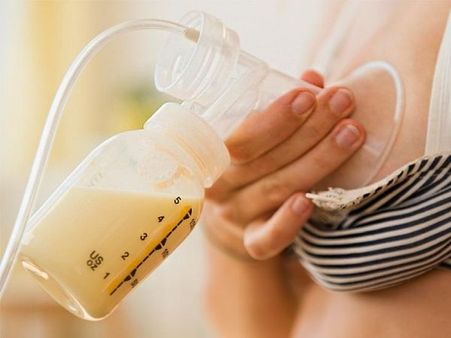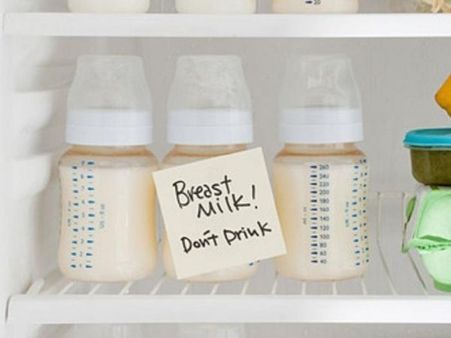Just In
- 34 min ago

- 4 hrs ago

- 8 hrs ago

- 8 hrs ago

Don't Miss
- Automobiles
 Maruti Suzuki Swift Sees Price Hike Across Variants: New Model Launch In May 2024
Maruti Suzuki Swift Sees Price Hike Across Variants: New Model Launch In May 2024 - News
 Lok Sabha Election 2024: Voting Begins In Eight LS Seats In Uttar Pradesh
Lok Sabha Election 2024: Voting Begins In Eight LS Seats In Uttar Pradesh - Movies
 Bade Miyan Chote Miyan Box Office Day 8: Akshay’s Film Sees Its Lowest Number As It Struggles To Cross 50Cr
Bade Miyan Chote Miyan Box Office Day 8: Akshay’s Film Sees Its Lowest Number As It Struggles To Cross 50Cr - Finance
 Stocks To Buy: 2 Trade Calls By Chandan Taparia of Motilal Oswal On Friday, 19 April
Stocks To Buy: 2 Trade Calls By Chandan Taparia of Motilal Oswal On Friday, 19 April - Sports
 LSG vs CSK IPL 2024: Who will Pick Maximum Wickets in Lucknow vs Chennai?
LSG vs CSK IPL 2024: Who will Pick Maximum Wickets in Lucknow vs Chennai? - Technology
 Nothing Phone 2 Receives NothingOS 2.5.5 Update with ChatGPT Integration and More
Nothing Phone 2 Receives NothingOS 2.5.5 Update with ChatGPT Integration and More - Education
 Karnataka SSLC Result 2024 Soon, Know How to Check Through Website, SMS and Digilocker
Karnataka SSLC Result 2024 Soon, Know How to Check Through Website, SMS and Digilocker - Travel
Telangana's Waterfall: A Serene Escape Into Nature's Marvels
World Breastfeeding Week 2020: Guidelines On How To Safely Store Breast Milk At Home
World Breastfeeding Week is celebrated worldwide every year from 1 to 7 August to promote breastfeeding and improve the overall health of babies.
As per the World Health Organization (WHO), breast milk is an excellent source of nutrition for babies after birth. It contains fat, carbohydrates, proteins, vitamins, minerals and water and other bioactive factors that strengthen the baby's immune system, protects against infection and helps in better absorption of nutrients [1].

And while breast milk is vital for optimal health of the infant, most working mothers face numerous challenges to breastfeed their babies after their maternity leave is over and return to work [2].
If you are away for a few hours and want to make sure you have breast milk for your baby, you will need to pump and store your breast milk at home. And once you start pumping, it is important to know how to safely store your expressed milk.

What Is Expressing Milk?
Expressing milk refers to the process of squeezing breast milk out of your breast by hand or with a breast pump so that it can be stored and fed to your baby later[3], [4].
Sometimes, it may take a little while for your milk to start flowing while expressing breast milk. So, you may find it easier if you take a shower or cover your breasts with a warm towel first before expressing.


How To Express Milk By Hand
Most mothers may find it easier to express milk by hand rather than using a breast pump, especially in the first few days or weeks
Guidelines for expressing breast milk:
- Wash your hands properly with soap and warm water.
- Gently massage your breasts to help the milk flow down.
- With one hand, cup your breast and with the other hand form a C shape with your thumb and forefinger.
- Squeeze your breast gently and make sure that you don't squeeze your nipple directly as it may become sore.
- Release the pressure and then repeat, try not to slide your fingers over the skin.
- Drops will start to appear and then the milk usually starts flowing.
- When the milk flow lessens, move your fingers to the other breast and repeat.
- Switch your breasts and repeat.
- Keep doing it until the milk drips slowly or stops altogether.
- Take a sterilised feeding bottle or a clean food-grade container with tight-fitting lid made of glass and hold it below your breast to store the milk in the bottle as it flows.
Note: According to the Centers for Disease Control and Prevention (CDC), don't use bottles with the recycle number 7, which means that the container is made of the chemical bisphenol A (BPA) [5].

How To Express Milk With A Breast Pump
Mothers can also express breast milk with a manual or electric breast pump. Ask your doctor before buying a breast pump as different pumps suit different women.
Guidelines for expressing breast milk:
- Inspect the pump kit and tubing to ensure that it's clean. If you find any mould, don't use it and buy a new one that is clean.
- Wash your hands with soap and water.
- Take the breast pump and place the funnel over your nipple. There are different funnel sizes to fit your nipples and ensure that the pump doesn't cause bruising or catch your nipple as it is sucked into the funnel.
- Begin pumping; it may take a few minutes for the milk to start flowing.
- Switch your breasts about every five minutes.
- After you are done pumping, remove the pump and carefully close the bottle with a cap on it.
- If you are using an electric breast pump alter the suction strength of the electric pump because if the strength is high it may be painful or damage your nipple.
Image ref: Healthline


How To Store Breast Milk At Home After Expressing
- Freshly expressed or pumped milk can be stored at room temperature (77°F or colder) for up to four hours [6].
- Freshly expressed or pumped milk can be stored in the refrigerator for up to four days.
- Freshly expressed or pumped milk can be stored in the freezer for about six months or up to 12 months as recommended by the CDC.
- Label each feeding bottle with the date you expressed the breast milk.
- Avoid storing breast milk in the door of the refrigerator or freezer as it will help protect the breast milk from temperature changes due to the opening and closing of the door. Place the feeding bottle in the back of the refrigerator or freezer.
- If you think that you won't use freshly expressed breast milk within four days, freeze it immediately. This will ensure to keep the quality of breast milk intact.
- Freeze breast milk in small amounts or the amount that you are going to feed at once to avoid wasting the milk.
- When you freeze breast milk, don't fill the feeding bottle to the brim because breast milk expands as it freezes.
- If you don't have access to a refrigerator or freezer, store the breast milk in an insulated cooler bag with frozen ice packs for up to 24 hours.

How To Thaw Frozen Breast Milk
- Thaw the oldest breast milk first [7].
- Thaw it in the refrigerator overnight before giving it to your baby.
- Gently warm the breast milk by placing the feeding bottle in a bowl of warm water or place it under warm running water.
- Do not thaw or heat breast milk in a microwave as it will destroy the nutrients in the breast milk and can burn your baby's mouth while feeding.
- Swirl the milk bottle to mix the fat, which may have separated.
- Use breast milk within 24 hours of thawing it in the fridge. This means 24 hours from when the breast milk is no more frozen, not from the time when you take it out of the freezer.
- Use breast milk within two hours once it has been thawed.
- Do not refreeze breast milk that has been defrosted.

To Conclude…
By following these guidelines for storing breast milk, you can maintain the safety and quality of expressed breast milk for the overall health of your baby.
However,
these
are
general
guidelines
for
storing
breast
milk
at
different
temperatures,
there
are
other
factors
that
need
to
be
considered
that
can
affect
how
long
breast
milk
can
be
stored
safely.
These
factors
include
the
volume
of
the
milk,
room
temperature
when
milk
is
expressed,
fluctuations
in
temperature
in
the
fridge
and
freezer
and
cleanliness.
Common
FAQs
Q.
Can
I
pump
into
the
same
bottle
all
day?
A.
You
shouldn't
combine
breast
milk
at
different
temperatures.
The
breast
milk
if
stored
at
room
temperature
stays
safe
for
up
to
four
hours,
so
you
can
pump
in
the
same
bottle
within
four
hours.
Q.
How
will
I
know
if
breast
milk
is
spoilt?
A.
Breast
milk
has
a
mild,
sweet
taste
when
it
is
fresh.
If
the
breast
milk
hasn't
been
stored
properly
it
will
taste
sour.
Q.
How
long
should
I
pump
for?
A.
If
your
breasts
aren't
stimulated,
you
need
to
pump
longer,
however,
the
average
time
for
pumping
is
15
to
20
minutes.
-
 pregnancy parentingWorld Breastfeeding Week 2023: Breastfeeding Made Easy; Expert Advice For New Mothers
pregnancy parentingWorld Breastfeeding Week 2023: Breastfeeding Made Easy; Expert Advice For New Mothers -
 pregnancy parentingWorld Breastfeeding Week 2023: 5 Important Facts, Date, History And Theme
pregnancy parentingWorld Breastfeeding Week 2023: 5 Important Facts, Date, History And Theme -
 basicsWorld Breastfeeding Week 2022: UNICEF Guidelines For Breastfeeding
basicsWorld Breastfeeding Week 2022: UNICEF Guidelines For Breastfeeding -
 postnatalWorld Breastfeeding Week 2020: 6 Different Breastfeeding Positions For Mothers
postnatalWorld Breastfeeding Week 2020: 6 Different Breastfeeding Positions For Mothers -
 prenatalWorld Breastfeeding Week 2019: Foods To Eat While Breastfeeding
prenatalWorld Breastfeeding Week 2019: Foods To Eat While Breastfeeding -
 postnatalWorld Breastfeeding Week 2020: Top 30 Foods To Increase Breast Milk Supply
postnatalWorld Breastfeeding Week 2020: Top 30 Foods To Increase Breast Milk Supply -
 postnatalWorld Breastfeeding Week 2020: 5 Breastfeeding Tips For Working Mothers
postnatalWorld Breastfeeding Week 2020: 5 Breastfeeding Tips For Working Mothers -
 toddlerWorld Breastfeeding Week 2019: Pros And Cons Of Breastfeeding Toddlers
toddlerWorld Breastfeeding Week 2019: Pros And Cons Of Breastfeeding Toddlers -
 pregnancy parentingExpert Opinion On Breastfeeding: How It Will Help Baby And Mother
pregnancy parentingExpert Opinion On Breastfeeding: How It Will Help Baby And Mother -
 pregnancy parentingShattering Myths: Breastfeeding Success After Surviving Breast Cancer
pregnancy parentingShattering Myths: Breastfeeding Success After Surviving Breast Cancer -
 pregnancy parentingWeight Loss: Can I Diet While Breastfeeding? How Much Weight Can I Lose?
pregnancy parentingWeight Loss: Can I Diet While Breastfeeding? How Much Weight Can I Lose? -
 pregnancy parentingBreastfeeding Pain: What To Do When It Hurts
pregnancy parentingBreastfeeding Pain: What To Do When It Hurts


 Click it and Unblock the Notifications
Click it and Unblock the Notifications




